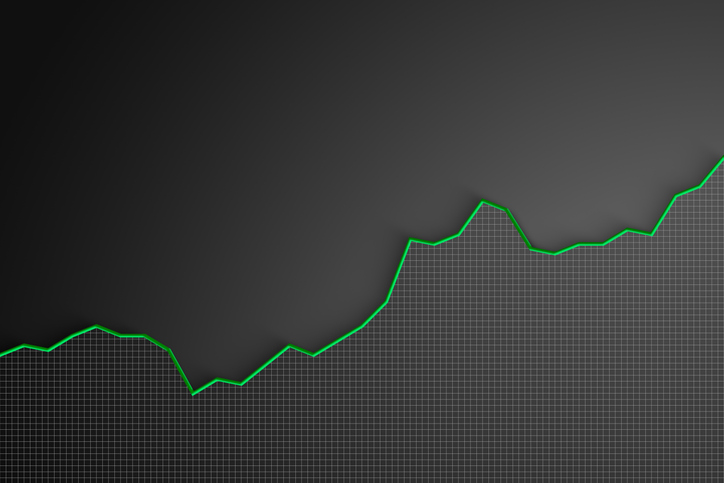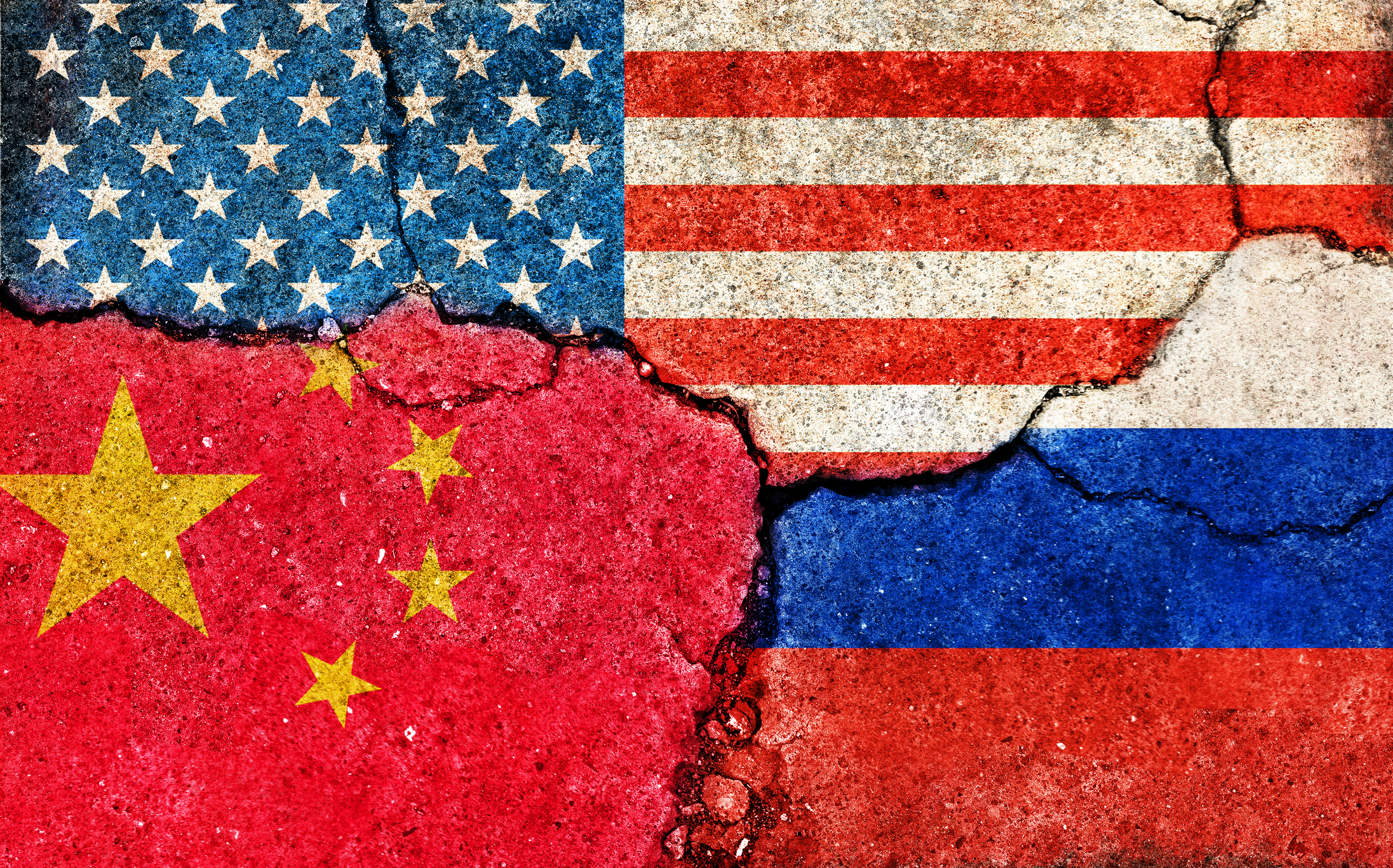Faster Growth Looks to Stay for Awhile
From mid-2014, the U.S. economy should grow 3% or better through 2016. Only two slight risks might hold us back.

At last, the plodding nag that has been the economy for the past five years has been coaxed into a trot. Second-quarter GDP is expected to be revised upward to close to 5% at an annual rate. In the second half of the year, the pace should reach an average of 3.3%.
What’s more, the beast gives every appearance of keeping up a healthier pace—about 3% a year—for the next few years. That will allow businesses to finally shift their focus from controlling costs to growing revenue by expanding. Business and consumer confidence have been on a strong upward path this year. Job openings have surged. Employment is growing at a better rate, and hence incomes are as well. That will boost consumer spending, which will, in turn, drive more business investment and further employment and income growth. This virtuous cycle—the force that drives most economic expansions—is the most basic reason for the upshift now. But there are other factors as well.
The worst of government austerity has probably passed, at least for several years. The federal deficit won’t start to grow again, renewing pressure on the government budget, until 2019 and later. Tight fiscal policy has been a drag on the economy in the past few years. In addition, new initiatives to combat the growing threat of Islamist terrorism could increase defense spending a bit.

Sign up for Kiplinger’s Free E-Newsletters
Profit and prosper with the best of expert advice on investing, taxes, retirement, personal finance and more - straight to your e-mail.
Profit and prosper with the best of expert advice - straight to your e-mail.
Housing has to perk up, probably in the not-too-distant future. There is a huge latent demand for new housing: The homeownership rate has fallen back to the level of the 1990s, as if the housing boom of the last decade had never happened. And there are 4.9 million 25- to 34-year-olds still living with their parents, about 1 million more than in 2007, before the recession. Moreover, building activity will pick up in response to the strong uptick in prospective buyer traffic and tight inventories. When that happens, it’ll give the economy an additional shot in the arm. The housing sector typically generates significant job growth when it is doing well (an estimated 3½ to 4 jobs for every single-family home start, according to the National Association of Home Builders).
Household balance sheets are strong—probably one of the reasons for the surprisingly strong spending on motor vehicles since late 2012. Debt service is down. During the past few years of extraordinarily low interest rates, many households refinanced their mortgages, locking in lower rates. Delinquency rates on auto loans and credit cards are very low. And the foreclosure crisis is nearly over in most states (the exceptions being states such as Florida and New Jersey with slow judicial systems). Household net worth is above pre-recession levels. That’s important because although consumers spend much less out of their wealth than out of their income, wealth reduces the need to save more out of current income. Indeed, the average saving rate has declined from 7.2% in 2012 to 5.3% now, in large part because of the stock market surge that began in late 2012.
Finally, banks are well capitalized, and the financial system is in decent shape. Loan losses and new delinquencies are back to pre-recession levels, including those on new mortgages. Commercial and industrial lending is very strong. Lending of all types, except for home equity lines of credit, is growing again.
There are two main risks of a trip-up going forward. The first is that when the Federal Reserve raises interest rates in the next few years it creates a headwind that impedes growth. The Fed, however, seems committed to not allowing higher interest rates to become too much of a drag. Fed chair Janet Yellen consistently emphasizes that the amount of slack that is left in the economy, not an artificial timetable, will determine Fed policy.
The second risk arises from the slowdown in growth around the rest of the world—Europe, Japan, China and other emerging economies—though there are signs that it may stabilize. A U.S. that is growing faster than the rest of the world will pull those economies along. But it will do so at the cost of a bigger trade deficit—slower growth in exports and more growth in imports that may substitute for some domestic production. This could diminish U.S. growth by half a percentage point or so. However, a small beneficial consequence of the relative strength of the U.S. economy would be that investors around the world will continue to see the U.S. as the world’s safe haven and pour money into it, thus slowing the expected rise in U.S. interest rates a bit.
Neither risk is particularly great, and the current business expansion is likely to be a long one. As Mark Zandi, chief economist of Moody's Analytics likes to say, "business expansions don’t die of old age." They expire when overheating forces the Federal Reserve to throw cold water on the fire; when structural imbalances in an important sector, such as housing, develop; or when an outside force delivers a shock, such as a spike in oil prices. While any of these is possible, none is likely for the forseeable future.
Get Kiplinger Today newsletter — free
Profit and prosper with the best of Kiplinger's advice on investing, taxes, retirement, personal finance and much more. Delivered daily. Enter your email in the box and click Sign Me Up.

David is both staff economist and reporter for The Kiplinger Letter, overseeing Kiplinger forecasts for the U.S. and world economies. Previously, he was senior principal economist in the Center for Forecasting and Modeling at IHS/GlobalInsight, and an economist in the Chief Economist's Office of the U.S. Department of Commerce. David has co-written weekly reports on economic conditions since 1992, and has forecasted GDP and its components since 1995, beating the Blue Chip Indicators forecasts two-thirds of the time. David is a Certified Business Economist as recognized by the National Association for Business Economics. He has two master's degrees and is ABD in economics from the University of North Carolina at Chapel Hill.
-
 Stock Market Today: Stocks Soar on China Trade Talk Hopes
Stock Market Today: Stocks Soar on China Trade Talk HopesTreasury Secretary Bessent said current U.S.-China trade relations are unsustainable and signaled hopes for negotiations.
By Karee Venema
-
 2026 Disney Dining Plan Returns: Free Dining for Kids & Resort Benefits
2026 Disney Dining Plan Returns: Free Dining for Kids & Resort BenefitsPlan your 2026 Walt Disney World vacation now. Learn about the returning Disney Dining Plan, how kids aged three to nine eat free, and the exclusive benefits of staying at a Disney Resort hotel.
By Carla Ayers
-
 The Economic Impact of the US-China Trade War
The Economic Impact of the US-China Trade WarThe Letter The US-China trade war will impact US consumers and business. The decoupling process could be messy.
By David Payne
-
 AI Heads to Washington
AI Heads to WashingtonThe Kiplinger Letter There’s big opportunity for AI tools that analyze MRIs and other medical images. But also big challenges that clinicians and companies will have to overcome.
By John Miley
-
 The AI Doctor Coming to Read Your Test Results
The AI Doctor Coming to Read Your Test ResultsThe Kiplinger Letter There’s big opportunity for AI tools that analyze CAT scans, MRIs and other medical images. But there are also big challenges that human clinicians and tech companies will have to overcome.
By John Miley
-
 The New Space Age Takes Off
The New Space Age Takes OffThe Kiplinger Letter From fast broadband to SOS texting, space has never been more embedded in peoples’ lives. The future is even more exciting for rockets, satellites and emerging space tech.
By John Miley
-
 Rising AI Demand Stokes Undersea Investments
Rising AI Demand Stokes Undersea InvestmentsThe Kiplinger Letter As demand soars for AI, there’s a need to transport huge amounts of data across oceans. Tech giants have big plans for new submarine cables, including the longest ever.
By John Miley
-
 What DOGE is Doing Now
What DOGE is Doing NowThe Kiplinger Letter As Musk's DOGE pursues its ambitious agenda, uncertainty and legal challenges are mounting — causing frustration for Trump.
By Matthew Housiaux
-
 A Move Away From Free Trade
A Move Away From Free TradeThe Letter President Trump says long-term gain will be worth short-term pain, but the pain could be significant this year.
By David Payne
-
 Trump’s Whirlwind Month of Crypto Moves
Trump’s Whirlwind Month of Crypto MovesThe Kiplinger Letter The Trump administration wants to strengthen U.S. leadership in the cryptocurrency industry by providing regulatory clarity.
By Rodrigo Sermeño